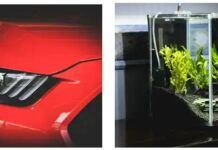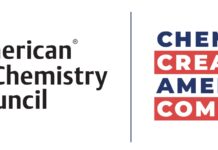
Southwest Research Institute (SwRI) has achieved a significant milestone, reaching new temperature records for testing materials in high-pressure environments. While conducting material testing for a high-pressure, high-temperature supercritical carbon dioxide (sCO2) turbine, SwRI achieved unprecedented conditions of 1,150 degrees Celsius (2,100 degrees Fahrenheit) at 300 bar (4,350 psi). These are the highest published temperature and pressure conditions ever reached in sCO2 materials testing.
In 2020, SwRI received a $6.4 million contract from the U.S. Department of Energy to design an sCO2 oxy-fuel turbine for a direct-fired sCO2 power plant. The project, led by Senior Research Engineer Michael Marshall and Institute Engineer Dr. Jeff Moore, required materials testing in extreme sCO2 environments.
“We evaluated turbine materials at constant temperatures and pressures with 100% sCO2. We assessed the performance of different materials and coatings under extreme conditions,” said SwRI’s Dr. Florent Bocher, who oversaw materials engineering for the project.
Previously, the highest pressure and temperature conditions reached for supercritical CO2 reported in the literature were 800 degrees Celsius at 300 bar, which SwRI aimed to exceed by 350 degrees. SwRI’s oxy-fuel turbine was designed to operate at a maximum temperature of 1,150 degrees.
“During initial testing, we aimed to build a test vessel to evaluate materials at the highest temperatures and pressures based on the turbine design, which was 1,150 degrees Celsius at 300 bar,” Bocher said. “However, the mechanical properties of the vessel materials decline as temperatures rise. This makes it impossible to safely use a traditional high-pressure and high-temperature experimental setup design, which incorporates external heating.”
To overcome this limitation, SwRI modified an autoclave, a specialized device designed to contain a high-pressure and high-temperature test environment. The researchers installed an induction coil inside the autoclave, while its exterior was actively cooled. This allows the external containment structure to stay relatively cool and hold the pressure safely while the inside of the vessel reaches the targeted high temperatures.
“The new setup allows us to reach up to 1,150 degrees Celsius at 300 bar, significantly enhancing our capability to conduct tests under extreme conditions,” Bocher said. “This advancement provides additional opportunities to support testing of other types of turbine materials.”
This unique capability can also test materials employed in other extreme applications, such as molten salt energy production and storage, hypersonics research and additional material testing for the Supercritical Transformational Electric Power (STEP) Demo pilot plant, a $170 million, 10-megawatt supercritical carbon dioxide (sCO2) demonstration facility at SwRI.
“This is a major accomplishment. SwRI’s superior capabilities push the boundaries of what’s possible in this field,” Bocher said. “This new capability is crucial for both current and future research areas and technologies that demand extreme testing conditions.”
© 2025 Southwest Research Institute
How a tetrahedral substance can be more symmetrical than a spherical atom
A type of semi-transparent polymer that can be mended at room temperature using small pressure












